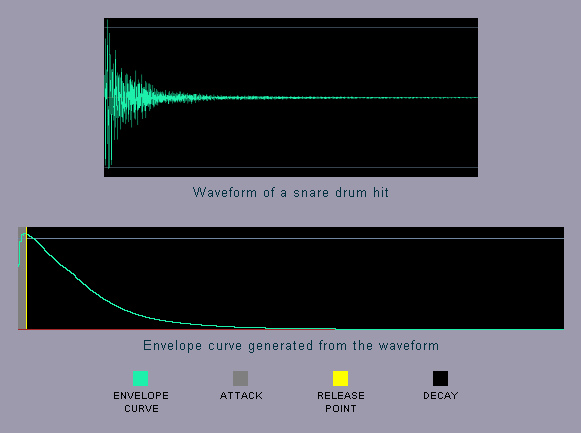Tone
A tone is a sound; that is, an audible vibration, treated as a definite entity. Of itself a tone possesses certain qualities, including, as determined by frequency, its pitch, which defines the fundamental tone; and, as determined primarily by amplitude, its loudness, both of which may or may not vary over the course of the duration of the tone.Timbre
Further defining the quality of a tone are its overtones, and to a lesser extent its undertones. The overtones are those components of the waveform of a frequency higher than that of the fundamental tone. The overtones are almost always of considerably lower amplitude than the fundamental, and yet are essential to defining the distinctive character, or timbre, of the tone. Harmonics are naturally occuring overtones, and are integral multiples of the frequency of the fundamental. For instance, in the case of a tone with fundamental frequency, and therefore first harmonic, of 440 Hz, the second harmonic will be 880 Hz (2:1); the third, 1320 (3:1); and so on.Envelope
A tone, or any combination of tones, is further defined by its envelope. The envelope of a tone is analyzed into several components, all of which refer to the relative amplitude, or dynamics, of the tone in the course of its evolution.The first component of the envelope is the attack, which refers to the progression of amplitude from the initial state of the tone to the point at which the amplitude first levels off. In general, the attack is comparitively quite brief.
Where the attack leaves off, the second component of the envelope, namely, the sustain, or internal dynamics, begins. The sustain is that portion of the envelope representing a more or less stable amplitude of the tone.
Once the amplitude of the tone begins, at the release point, to diminish toward its ultimate end, the tone enters the stage represented by the third component of the envelope, the decay. The decay proceeds from the level of the sustain at the release point, to zero amplitude.

In the case of most percussive sounds, such as the snare drum hit pictured here, the release point coincides with the end of the attack, and so there is no clear distinction between the sustain component and the decay component.